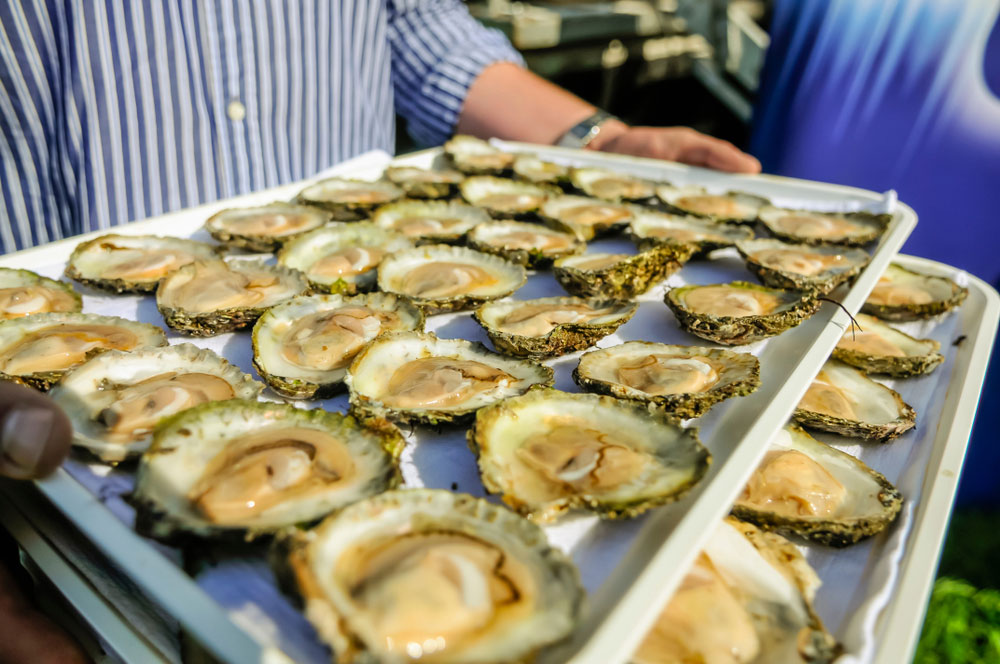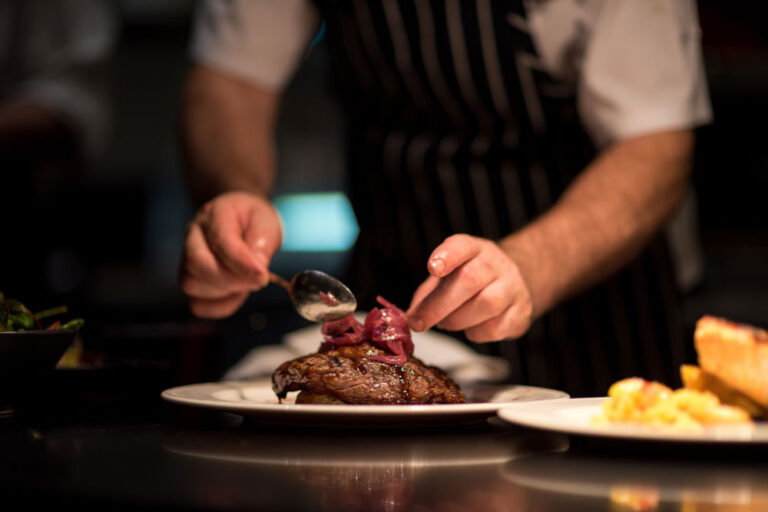The History of Irish Oyster Farming
Centuries ago, the verdant coasts of Ireland were teeming with an abundance of oysters, a prized resource cherished by the Celtic tribes and ancient settlers. The bountiful waters offered a natural haven for these delectable shellfish, bestowing upon them a distinct flavor profile that captivated the palates of the early inhabitants.
In the annals of Irish history, oysters held a revered status, not merely as a source of sustenance but as a symbol of opulence and vitality. The Celtic tribes, known for their deep connection to the land and sea, recognized the nutritional value and exquisite taste of these shellfish, incorporating them into their diets and communal gatherings.
Initially, oysters were procured through wild harvesting techniques, where they thrived abundantly along Ireland’s untamed coastlines. The native populations would forage for these treasures, harnessing the natural bounty of the surrounding waters to feast on these delicacies. However, as demand grew and populations expanded, a shift occurred in the approach towards oyster procurement.
Over time, the practices of oyster farming began to take shape, evolving from the reliance on wild harvests to more controlled and intentional cultivation methods. The ancient techniques of wild harvesting gradually transitioned into the strategic cultivation of oysters along the coastlines, laying the foundation for the sophisticated oyster farming practices observed along Ireland’s shores today.
This evolution marked a pivotal moment in the history of Irish oyster farming. Cultivation processes became more refined, with farmers carefully selecting optimal locations along the coastline that provided the perfect conditions for oyster growth. Through attentive stewardship of these coastal areas, oyster farming emerged as a practiced art, balancing the symbiotic relationship between nature’s offerings and human intervention.
The transformation from wild oyster gathering to controlled cultivation not only ensured a more sustainable supply of these prized shellfish but also amplified their availability and accessibility. This shift in approach not only preserved the natural habitats of these bivalves but also fortified their place as a revered ingredient in Irish cuisine and culture.
Today, the legacy of this historical evolution endures in the meticulous practices of Irish oyster farming. The industry reflects a fusion of ancient traditions with contemporary expertise, honoring the rich history of these coastal waters while nurturing a sustainable future for these prized shellfish.
Cultivation Process
The art of oyster farming along the Irish coast is a harmonious blend of natural selection and human ingenuity, where farmers meticulously choose prime locations that provide an ideal environment for nurturing these coveted shellfish.
The initial step in the cultivation process involves a scrupulous assessment of the coastal regions, with farmers scouring the vast expanse of the Irish coastline to identify locations where nature’s elements converge harmoniously to create the perfect habitat for oyster growth. These prime sites boast a symphony of characteristics, including pristine water quality, optimal salinity levels, and crucially, the ebb and flow of tidal movements that oxygenate the waters and supply vital nutrients to the oysters.
Once these optimal locations are identified, farmers embark on the strategic deployment of various cultivation methods, tailored to ensure the oysters flourish within their natural surroundings. Among the array of techniques employed, the use of trays or bags takes center stage in the nurturing process.
Trays and bags serve as protective sanctuaries for the developing oysters, allowing them to thrive in a controlled environment while still benefiting from the natural elements of their coastal home. These trays or bags are carefully arranged within the designated areas, submerged in the nutrient-rich waters that caress the Irish shores.
The choice of cultivation vessel—whether trays or bags—is often based on the farmer’s expertise, the local environmental conditions, and the specific requirements of the oyster species being cultivated. These containers cradle the oysters, providing shelter from predators and ensuring a conducive environment for their growth and development.
As the oysters flourish within these trays or bags, they absorb the rich nutrients present in the water, steadily growing and maturing over time. This nurturing process allows the oysters to develop the sought-after flavors and textures that have made Irish oysters renowned among aficionados.
Moreover, the cultivation methods employed by these farmers not only aim for optimal growth and flavor but also prioritize sustainability and environmental stewardship. The careful tending of these oyster beds ensures a delicate balance between human intervention and the preservation of the natural ecosystem, safeguarding the longevity of these coastal treasures for generations to come.
Thus, the cultivation of Irish oysters stands as a testament to the intricate dance between nature’s gifts and human expertise, where the careful selection of locations and the thoughtful use of cultivation methods converge to produce the exquisite flavors that define these cherished shellfish.
Regional Varieties and Distinct Flavors
The coastal topography of Ireland, marked by its diversity and splendor, serves as a canvas upon which a tapestry of distinct oyster varieties flourishes. Each region, with its own maritime microcosm, nurtures a unique breed of oysters, showcasing a symphony of flavors and textures that captivate the discerning palates of oyster enthusiasts.
County Clare, home to the renowned Flaggy Shore oysters, boasts a coastline kissed by the salty embrace of the Atlantic Ocean. Here, these plump and robust oysters thrive in the bracing waters, their shells bearing witness to the rugged terrain they call home. The Flaggy Shore oysters exhibit a boldness in flavor, their brininess tempered by a subtle sweetness that lingers on the palate, a testament to the pristine coastal environment they inhabit.
In contrast, County Louth’s Carlingford oysters, nestled along the tranquil waters of Carlingford Lough, offer a different sensory experience. These oysters, bathed in the gentle currents of the lough, develop a delicate and nuanced flavor profile. Their shells cradle oysters that boast a refined taste, characterized by a milder salinity accompanied by hints of mineral notes, evoking the tranquility of their serene coastal home.
Venturing further along the Irish coastline, other regions reveal their own treasure troves of oyster varieties, each imbued with the essence of its unique maritime habitat. From the sweet and plump Galway oysters to the subtly complex Dungarvan oysters of Waterford, and the creamy Umami oysters found along the sheltered inlets of Cork, the regional diversity in flavors mirrors the rich tapestry of Ireland’s coastal landscapes.
The distinct flavors encapsulated within these regional oysters are not merely a result of their environment but also a manifestation of the intricate interplay between tidal patterns, nutrient-rich waters, and the particularities of the species cultivated in each locale. The meticulous care taken by oyster farmers to harness the essence of these coastal havens ensures that each variety encapsulates the terroir of its region, offering oyster aficionados a sensory voyage through Ireland’s diverse coastal ecosystems.
These regional oyster varieties, celebrated for their unique flavors and textures, represent more than just a culinary delight; they are a testament to the intimate relationship between land, sea, and the delicate intricacies that shape the character of Ireland’s coastal bounty. The diversity of flavors found in these regional oysters epitomizes the terroir-driven essence of Irish oysters, inviting connoisseurs to savor the essence of Ireland’s coastal allure with each briny, succulent bite.

Significance in Irish Cuisine and Culture
In the realm of Irish culinary traditions, oysters occupy a hallowed position, transcending mere sustenance to embody a cultural emblem steeped in history, luxury, and conviviality. These prized shellfish have ingrained themselves deeply within the fabric of Irish cuisine and culture, earning reverence as a symbol of opulence and a fixture in celebratory gatherings.
Throughout the annals of Irish history, oysters have been regarded as a culinary treasure, sought after for their exquisite taste and revered for their role in extravagant feasts and special occasions. These succulent bivalves, heralded for their briny richness and unique flavors, have graced the tables of aristocrats and commoners alike, symbolizing decadence and abundance.
The prominence of oysters in Irish cuisine is most pronounced during celebratory feasts and significant events. From grand banquets to intimate gatherings, these shellfish have often taken center stage, elevating the dining experience and adding a touch of luxury to the festivities. Their presence symbolizes prosperity and extravagance, bestowing upon the occasion an air of sophistication and indulgence.
Moreover, beyond their culinary allure, oysters hold a deeper cultural significance within Ireland. They serve as more than just a dish; they embody a legacy passed down through generations, a testament to the deep connection between the Irish people and their coastal heritage. Oysters are intertwined with folklore, stories, and traditions, evoking tales of the sea and the abundance it offers.
One of the most iconic celebrations showcasing the cultural significance of oysters is the renowned Galway Oyster Festival. This annual event, steeped in history and tradition, pays homage to these esteemed shellfish, attracting both locals and visitors from around the world. It serves as a vibrant testament to the oyster’s place in Irish culture, featuring oyster shucking competitions, culinary delights, music, and revelry, all in celebration of this coastal treasure.
The oyster, with its rich history and cultural resonance, transcends the realm of food to become a symbol of unity, festivity, and shared heritage among the Irish people. It embodies the essence of Irish coastal life and serves as a unifying element, bringing communities together to celebrate their culinary heritage and the bounty of the sea.
In essence, the significance of oysters in Irish cuisine and culture goes beyond their delectable taste; they represent a cherished tradition, a cultural emblem, and a testament to the enduring relationship between the Irish people and their maritime roots. Their presence at the heart of celebrations and festivals reinforces their status as not just a culinary delight but a cultural icon that embodies the spirit and richness of Irish heritage.
Challenges and Conservation Efforts
Irish oysters, steeped in historical and culinary significance, confront an array of challenges amid the ever-evolving landscape of environmental shifts and industry dynamics. The delicate balance of Ireland’s oyster beds faces threats stemming from multifaceted factors, necessitating concerted conservation endeavors and the adoption of sustainable practices to safeguard this cherished culinary heritage.
One of the foremost challenges confronting Irish oysters lies in the realm of environmental changes. Factors such as fluctuating water temperatures, alterations in ocean acidity, and the impact of climate change pose significant threats to the delicate ecosystems that nurture these prized shellfish. These shifts can disrupt the natural rhythms of oyster cultivation, affecting their growth, survival rates, and overall health.
Furthermore, the oyster farming industry contends with fluctuations and uncertainties inherent in economic landscapes. Market dynamics, consumer preferences, and global trade influences can create volatility, impacting the livelihoods of oyster farmers and the sustainability of the industry at large. These challenges accentuate the need for resilience and adaptability within the oyster farming sector.
In response to these challenges, conservation efforts and sustainable practices emerge as imperative pillars in preserving Ireland’s oyster beds and upholding this culinary legacy. Ongoing initiatives focus on fostering resilience within oyster populations, enhancing habitat preservation, and promoting responsible harvesting practices.
Conservation endeavors are centered on maintaining the delicate balance of coastal ecosystems that sustain oyster habitats. These efforts encompass the protection of water quality, the preservation of natural habitats, and the mitigation of anthropogenic impacts on the coastal environment. Restorative measures seek to minimize pollution, mitigate habitat degradation, and foster a conducive environment for the thriving of oyster populations.
Moreover, the embrace of sustainable practices within the oyster farming industry is crucial to ensure the long-term viability of these coastal treasures. Farming techniques that prioritize ecological balance, responsible harvesting methods, and the reduction of environmental footprints are gaining prominence. Innovative approaches, such as integrated aquaculture systems and habitat restoration projects, aim to harmonize human activities with the natural environment, fostering a sustainable coexistence.
Collaborative efforts between government entities, conservation organizations, researchers, and stakeholders within the oyster farming community play a pivotal role in steering these conservation and sustainability initiatives. Their collective endeavors aim not only to address existing challenges but also to fortify the resilience of Ireland’s oyster beds, ensuring the continuity of this cherished culinary heritage for generations to come.
In essence, the challenges faced by Irish oysters underscore the urgent need for proactive conservation measures and the adoption of sustainable practices. Through concerted efforts and a commitment to environmental stewardship, preserving the delicate balance of Ireland’s oyster beds becomes not only a culinary imperative but a testament to safeguarding the rich tapestry of coastal ecosystems and cultural heritage.
The Future of Irish Oysters
The future of Irish oysters is poised at the confluence of evolving culinary preferences and a burgeoning global movement toward sustainable food sources. Against the backdrop of a world increasingly attuned to the importance of environmentally conscious dining choices, Irish oysters emerge as culinary gems with a promising trajectory.
The escalating appreciation for sustainable seafood represents a pivotal factor shaping the future landscape for Irish oysters. With consumers worldwide exhibiting a growing appetite for responsibly sourced, environmentally friendly fare, these prized shellfish from Ireland’s coastal waters stand as exemplars of sustainable gastronomy. The allure of Irish oysters lies not only in their exquisite taste but also in their cultivation through eco-friendly practices that harmonize with nature.
The ongoing innovation in oyster farming practices augurs well for the future of these delicacies. Farmers, buoyed by a spirit of ingenuity and a commitment to sustainability, are embracing cutting-edge techniques that enhance both the quality of the oysters and the health of the coastal ecosystems. Advancements in integrated aquaculture systems, the implementation of eco-friendly materials, and the utilization of renewable energy sources signify a progressive shift toward more environmentally sensitive farming methods.
Furthermore, a renewed emphasis on preserving coastal ecosystems stands as a beacon of hope for the future of Irish oysters. Conservation initiatives aimed at safeguarding marine habitats, restoring degraded coastal areas, and mitigating the impact of human activities on the environment are instrumental in fortifying the resilience of oyster beds. These endeavors not only sustain the delicate balance of ecosystems but also bolster the robustness of oyster populations, ensuring their continuity as a culinary treasure.
Amid these transformative shifts, Ireland’s oysters are poised to captivate discerning palates worldwide. Their reputation for exceptional taste and their cultivation through sustainable means position them as sought-after delicacies on the global culinary stage. The inherent connection between these shellfish and the pristine coastal landscapes of Ireland evokes a sense of authenticity and purity that resonates with conscientious consumers seeking ethically sourced and environmentally friendly dining experiences.
In conclusion, the future of Irish oysters shines bright, propelled by an alignment of culinary trends, innovative farming practices, and a steadfast commitment to environmental stewardship. As these prized delicacies continue to charm palates worldwide, they stand as emblematic ambassadors of sustainable seafood and herald a promising era for the preservation of Ireland’s rich coastal heritage.







